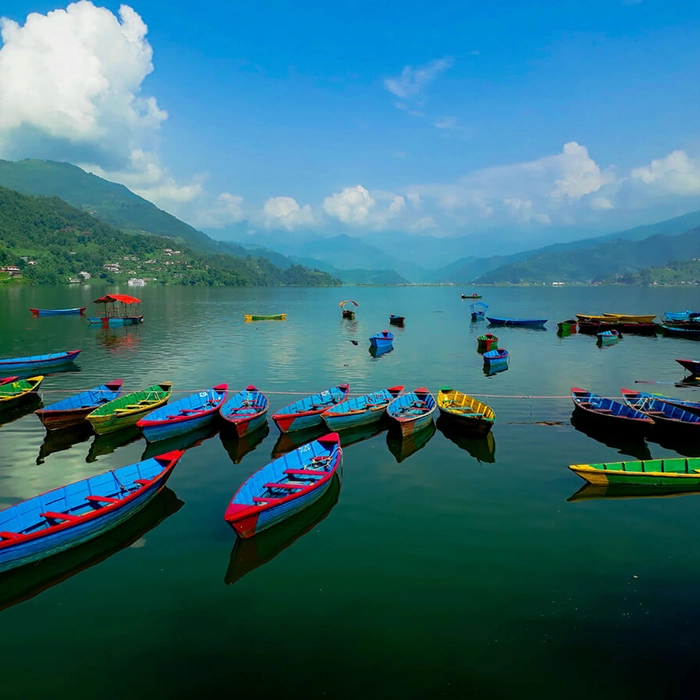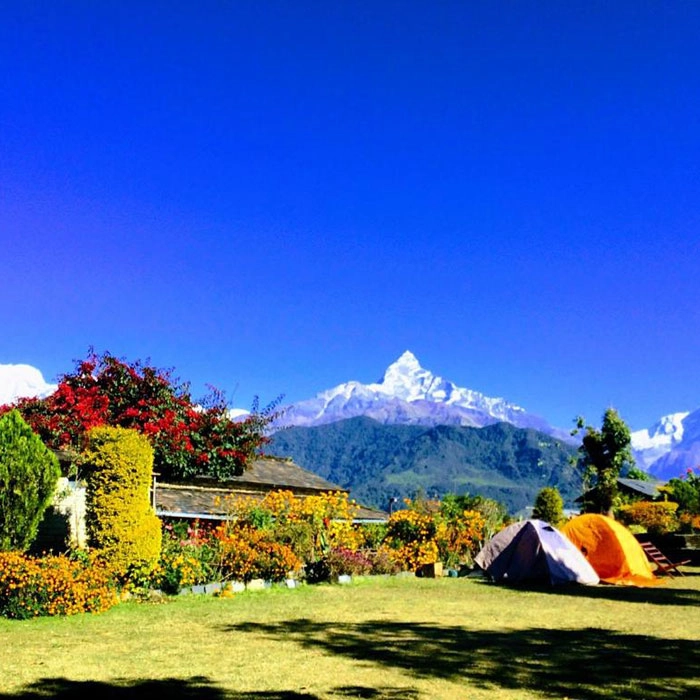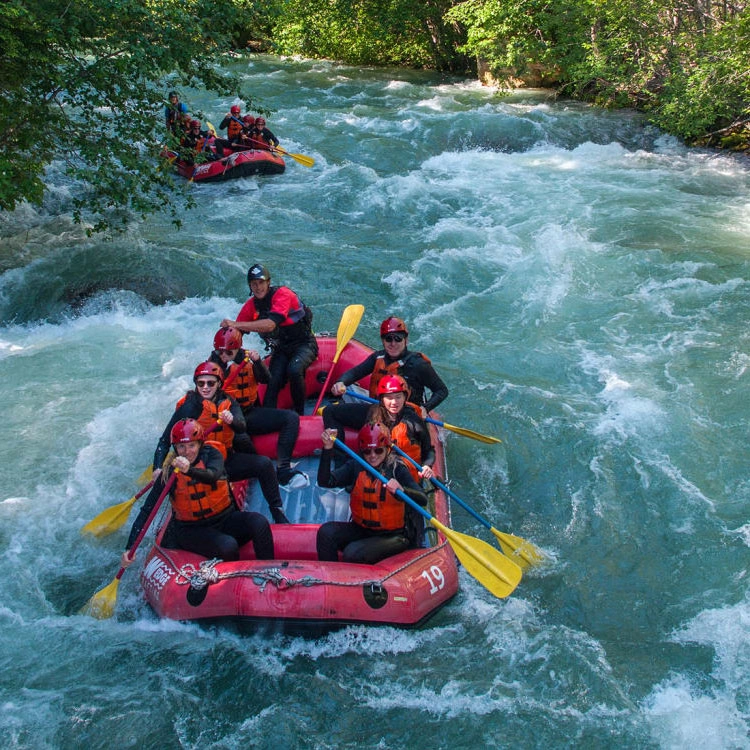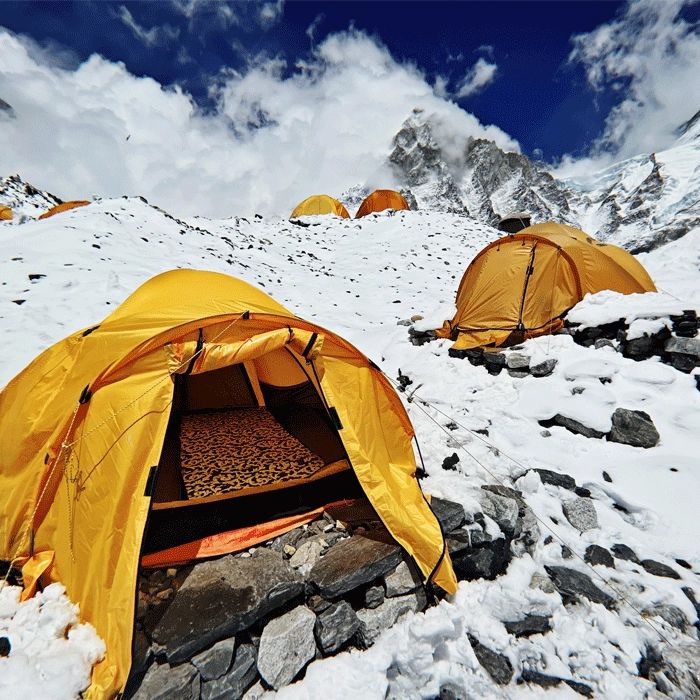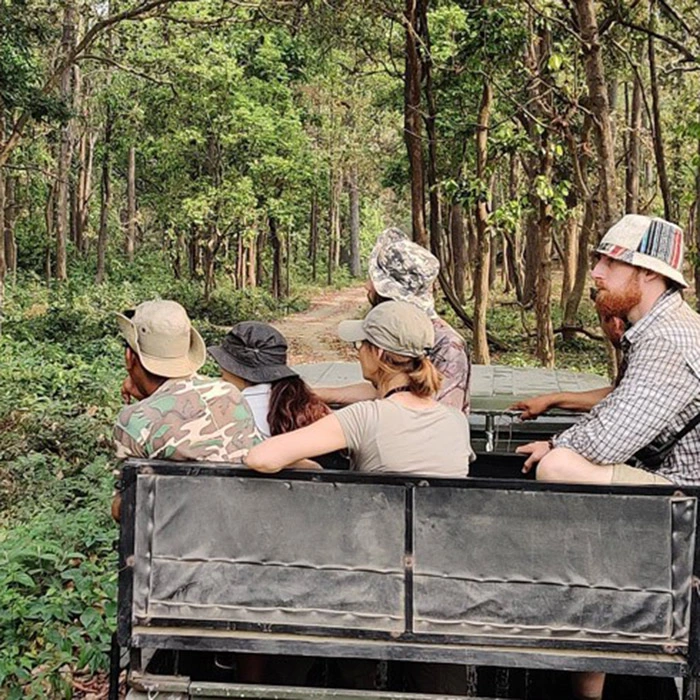LOWER DOLPO TREK
US$4,560.00
/pp
-
19 Days
-
Upper Dolpo
-
Spring/Autumn
-
Trekking
-
5,309 Meters
-
Hard
-
Car / Plane
-
02-16 People
-
JH#297
 Overviews
Overviews
The Lower Dolpo Trek is a captivating journey into one of Nepal’s most remote and culturally rich regions, offering an extraordinary blend of pristine landscapes, high mountain passes, and vibrant local traditions. Often referred to as Nepal’s Forbidden Kingdom, Lower Dolpo remains largely untouched by mass tourism, providing trekkers with a rare opportunity to experience authentic Himalayan wilderness and Tibetan Buddhist heritage. The trek begins in Juphal and winds through traditional Tibetan villages such as Dho-Tarap and Ringmo, where stone houses with flat roofs and ancient monasteries showcase the region’s unique architecture and cultural legacy. As you traverse diverse terrains—from lush green valleys and terraced farmland to stark high-altitude landscapes—you are surrounded by awe-inspiring vistas of the Dhaulagiri range and the expansive Dolpo highlands. Along the way, trekkers pass through verdant forests of pine, juniper, and birch, as well as alpine meadows, offering chances to spot Himalayan wildlife and admire vibrant flora. A highlight of the trek is Phoksundo Lake, renowned for its striking turquoise waters and tranquil surroundings. Situated at 3,611.5 m (11,849 ft), this high-altitude lake is one of Nepal’s most picturesque, framed by glaciers and snow-capped peaks, making it a perfect destination for photography and reflection. The region’s spiritual significance is enhanced by nearby monasteries and sacred sites, allowing trekkers to immerse themselves in local Tibetan-Buddhist culture. For adventure seekers, the trek includes challenging high passes such as Numa La (5,309 m / 17,414 ft) and Baga La (5,169 m / 16,959 ft), rewarding hikers with panoramic views of the surrounding peaks and valleys. Daily hikes range from moderate to strenuous, making the trek suitable for fit and experienced trekkers seeking both adventure and cultural immersion. The Lower Dolpo Trek is ideally undertaken during autumn and spring, when clear skies, mild temperatures, and blooming rhododendrons enhance the scenery. This journey combines the thrill of exploration with the richness of remote Himalayan culture, offering an unforgettable adventure through one of Nepal’s most enchanting and secluded regions. Whether discovering ancient villages, crossing high passes, or marveling at Phoksundo Lake, this trek promises an authentic and transformative Himalayan experience.
 Itinerary (Plan)
Itinerary (Plan)
Arrive in Kathmandu (1,400 m / 4,593 feet), Nepal's vibrant capital, where you'll be warmly welcomed with marigold garlands. After transferring to your hotel, take time to relax and acclimate to the bustling city. Discover vibrant local markets, indulge in traditional Nepali dishes, and delve into Kathmandu's rich cultural tapestry. This initial day is perfect for easing into your journey, setting the stage for the exciting adventures ahead in Eastern Nepal. A representative from Jagadamba Holidays will ensure a smooth and pleasant arrival.
Optional Evening Activity:
If you wish, you can spend your evening experiencing the Pashupatinath Aarti, a captivating religious ceremony held at the Pashupatinath Temple. The Aarti usually begins around 6:00 PM and lasts for approximately an hour. This ceremony is a mesmerizing display of traditional music and rituals, providing a profound insight into Hindu spiritual practices. Please check the exact time for the Aarti on the day of your visit, as it may vary. This option is not included in the standard itinerary but offers a unique opportunity to immerse yourself in local culture.
Begin your day with a guided exploration of Kathmandu’s rich cultural and heritage sites, immersing yourself in the city’s history and spiritual traditions. Visit Pashupatinath Temple, a sacred Hindu site along the Bagmati River, where daily rituals and ceremonies offer a glimpse into Nepalese devotion. Continue to Boudhanath Stupa, one of the largest Buddhist stupas in the world, surrounded by monasteries, prayer wheels, and vibrant Tibetan culture, creating a serene and inspiring atmosphere. In the afternoon, explore the architectural treasures of Patan Durbar Square, a UNESCO World Heritage Site renowned for its Malla-era temples, courtyards, and intricate stone and wood carvings. Highlights include the Krishna Mandir, the Golden Temple, and the terracotta-adorned Mahabouddha Temple. This immersive cultural tour provides a deep understanding of Kathmandu’s artistic and religious heritage. The day concludes with trek preparation and pre-trip briefing at your hotel, organized by the Jagadamba Holidays team. All Dolpo trekking permits and documentation are arranged, and your guide will review the route, safety instructions, equipment tips, and answer any questions. This ensures you are fully prepared and confident before embarking on your high-altitude Dolpo adventure.
After a hearty breakfast at your hotel, Kathmandu Guest House in Thamel, Kathmandu (1,400 m / 4,593 ft), proceed to the domestic airport for your scenic 1-hour flight to Nepalgunj (150 m / 492 ft). As the plane ascends, enjoy stunning aerial views of the Kathmandu Valley, rolling hills, and terraced farmland. On clear days, you may spot snow-capped Himalayan peaks including Langtang, Ganesh Himal, Manaslu, and the majestic Dhaulagiri range, along with the distant Dolpo region mountains, offering an early glimpse of the high-altitude adventure ahead. Upon arrival in Nepalgunj, a vibrant town on the edge of Nepal’s Terai plains, take in its lively markets, bustling streets, and multicultural atmosphere. Known as a gateway to western Nepal, Nepalgunj reflects a blend of Tharu, Nepali, and Muslim cultures, with colorful bazaars and local eateries that provide a taste of the region’s unique lifestyle. Use this leisure time to explore, shop, or sample local delicacies, making it a perfect introduction to the Terai before your trek. In the evening, return to your accommodation for rest and pre-trek preparation. The Jagadamba Holidays team will assist with all trekking permits and arrangements, while your guide provides a pre-trek briefing, ensuring you are fully prepared, informed, and energized for the journey ahead.
After a hearty breakfast at Batika Hotel in Nepalgunj (150 m / 492 ft), proceed to the domestic airport. Begin your journey with a 35-minute flight from Nepalgunj to Juphal Airport (2,475 m / 8,124 ft). The flight provides panoramic aerial views of the Terai plains, mid-hills, and distant Himalayan ranges, including peaks of the Dolpo region. This short flight smoothly transitions you from lowland subtropical terrain to highland landscapes, offering an early orientation of the region’s topography. Upon landing at Juphal, commence the trek to Dunai (2,140 m / 7,020 ft). The route is moderate in difficulty, with gradual ascents and descents along well-marked trails. Hikers should be cautious of rocky sections and minor river crossings. This trek is ideal for acclimatization, allowing travelers to adapt to altitude while observing the local flora, fauna, and settlement patterns. The trek spans approximately 12 km and requires 5–6 hours of walking. During the journey, participants will ascend 180 meters and descend 660 meters, passing through traditional villages, terraced farmland, and forested areas. Cultural and architectural highlights include stone-built houses, prayer flags, and small gompas, reflecting the Tibetan-influenced heritage of the Dolpo region. By the end of the day, you will arrive in Dunai, a key administrative and cultural hub. Travelers can rest, enjoy local hospitality, and prepare for the following days of trekking, having gained their first immersive experience of Dolpo’s stunning landscapes, traditional communities, and high-altitude environment.
After a hearty breakfast at lodge in Dunai, we began our trek to Tarakot at 2,540 m (8,333 ft). The route follows the Thuli Bheri River valley through terraced fields, lush forests, and traditional Dolpo villages. Along the way, we crossed hanging bridges and passed through dramatic gorges, showcasing the raw beauty of Lower Dolpo. As the valley widened, the scenery transformed from fertile farmland into rugged landscapes dotted with mud-brick houses, blending natural charm with cultural richness. Today’s trek covers 17 km and generally takes 6 to 7 hours. During the journey, we ascend approximately 730 metres and descend around 110 metres. The trail follows the riverbanks, crossing the Thuli Bheri River several times before gently climbing a small hill near Tarakot. This stage provides a smooth introduction to trekking in the Dolpo region, combining gradual elevation gain with opportunities to acclimatize to the Himalayan environment. By late afternoon, we reached Tarakot, a historic settlement known for its distinctive architecture, ancient heritage, and traditional lifestyle. As accommodations are limited, we stayed in tented camps, where the support team set up tents and the kitchen staff prepared freshly cooked meals. After a warm dinner under the starry Himalayan sky, we rested and embraced the tranquil atmosphere of the Dolpo wilderness.
After a hearty breakfast at camp in Tarakot, we began our trek to Laina Odar (3,370 m / 11,056 ft) along the winding trails of the Thuli Bheri River. The route meanders through the vibrant fields of the Tichurong Valley, crossing small streams and suspension bridges that connect picturesque villages. We passed through pine and fir forests, terraced farmland, and dramatic gorges that highlight the rugged beauty of the Lower Dolpo region. The journey included a crossing over the Yalankot River, a gradual ascent through shaded forests, and a descent to a checkpoint at the confluence of the Bharbung Khola and Tarap Khola. Following the Tarap Khola northward, the trail led us into the magnificent Tarap Gorge, where steep cliffs and the soothing sound of rushing waters added to the day’s adventure. Today’s trek covers a distance of around 14 km and generally takes 6 to 7 hours of steady walking. Along the way, we ascended approximately 1,040 m and descended about 430 m, making this a moderate but highly rewarding section of the Dolpo trekking route. The path alternated between riverside trails, forested ridges, and terraced slopes. The presence of the ancient Chhedhul Gumba along the route offered cultural insight and moments of rest, while the undulating terrain provided excellent acclimatization. The mix of cultivated valleys, alpine vegetation, and dramatic gorge landscapes made this one of the most diverse days of the Dolpo trek. By late afternoon, we reached Laina Odar, also known as Lahini Odar, a tranquil resting place nestled against rocky cliffs and river valleys. This remote stop offers no lodges, so accommodation is arranged in tented camps, where your support team sets up tents and the kitchen staff prepares warm meals. Surrounded by forests and the constant murmur of the river, the campsite offers a peaceful atmosphere to unwind and recover. Dinner under the Himalayan night sky completed the day, leaving us with both cultural memories and deep connections to the untouched beauty of Dolpo.
After a hearty breakfast at camp in Laina Odar, we began our trek to Nawarpani (also known as Pibuk) at 3,475 m / 11,401 ft. The trail follows the wild and beautiful Tarap Khola Gorge, one of the most dramatic landscapes in Lower Dolpo. The path climbed steeply along the rocky cliffside ledges, with sections carved directly into vertical rock walls, offering thrilling views of the turquoise waters far below. The journey meandered through pine and juniper forests, streams flowing into the Tarap River, and narrow canyons where the roar of the river echoed between towering cliffs. Each turn revealed pristine wilderness and occasional traces of ancient Dolpo settlements, highlighting the blend of raw nature and cultural heritage. Today’s trek covered a distance of 15 km, requiring around 6 to 7 hours of steady walking. Along the way, we ascended 960 m and descended 490 m, making this a moderately challenging but highly rewarding stage of the Dolpo trek. The steep climb to Laina Top tested stamina but rewarded us with sweeping views across the gorge. From there, the undulating trail followed the river northward, alternating between high ridges and riverside tracks. Passing by the historic Chhedhul Gumba, trekkers experienced moments of reflection and cultural depth, while the rugged gorge and rushing river created a constant sense of adventure. By late afternoon, we reached Nawarpani (Pibuk), a remote settlement beside the Tarap Khola. Known for its cave-style kitchens and seasonal shelters, it reflects the resilience of people living in the Dolpo highlands. With no permanent lodges available, our team set up tented camps by the river, where freshly cooked meals were prepared by the kitchen staff. The peaceful riverside atmosphere, framed by dramatic cliffs and the sound of flowing water, created an unforgettable camping experience. After dinner under the star-studded Himalayan sky, we embraced the tranquility of Dolpo’s wilderness and prepared for the adventures ahead.
After a hearty breakfast at camp in Nawarpani, we began our trek to Dho Tarap (3,944 m / 12,940 ft), one of the highest inhabited villages in the Himalayas. The trail followed the Tarap Khola through a narrow gorge, where steep cliffs towered above the river. We crossed suspension bridges several times, alternating between wooded paths and rocky ledges. At Kamattarka, the confluence of the Tarap Chu and a stream from the east, the gorge gradually opened into alpine meadows. Fragrant juniper and wild rose bushes marked our passage above the tree line, while the wider valley revealed the raw and untouched beauty of Dolpo. Today’s journey covered 16 km and took 7 to 8 hours of walking. We ascended 470 m and descended 170 m, making this stage a steady but manageable climb. The route combined riverside sections, forested ridges, and high meadows, with a lunch stop at Langa, a scenic spot overlooking the valley. The gradual elevation gain allowed for acclimatization while providing varied landscapes, from cultivated fields to windswept highlands, ideal for a smooth transition into the upper reaches of the region. By late afternoon, we reached Dho Tarap, a traditional settlement surrounded by irregular stone walls and lined with mud-brick houses. The village is rich in Tibetan culture, where both Nyingma Buddhism and the ancient Bon religion are still practiced. Prayer flags fluttered above monasteries, adding a spiritual charm to the remote setting. With no lodges available, we stayed in tented camps, where the support team prepared dinner. The peaceful evening in Dho Tarap, filled with cultural encounters and the sound of the highland winds, offered both rest and a memorable glimpse into the heart of Dolpo.
After a warm breakfast at camp in Dho Tarap (3,944 m / 12,940 ft), we dedicated the day to acclimatization and cultural exploration. The Tarap Valley opened wide, surrounded by rugged mountains, grazing yaks, and the flutter of prayer flags in the crisp Himalayan air. This picturesque valley is home to communities that practice both Tibetan Buddhism and the ancient Bon religion, giving visitors a unique insight into traditions preserved for centuries. Short acclimatization walks led us through fields, stone-walled villages, and sacred sites, while the serene environment provided a chance to slow down and absorb the authentic atmosphere of Dolpo. Acclimatization at this altitude is essential for safe trekking in the Himalayas. Spending a full day here allowed our bodies to adapt to reduced oxygen levels before tackling higher passes in the coming days. Gentle hikes around the valley followed the principle of “climb high, sleep low,” helping prepare for elevation gains ahead. The day’s slower pace not only aided our physical adjustment but also offered time to connect with the surroundings—listening to the sound of mountain winds, watching herders with their livestock, and engaging with the warm-hearted locals of the valley. During exploration, we visited significant monasteries such as Ribo Bhumpa Monastery, the main Buddhist site in Dho Tarap, and the nearby Bonpo Gompa. We also discovered the Sipchhog Gumba, where ancient Bon practices are still alive. Friendly villagers often shared salted butter tea or traditional barley brew, along with stories of their highland life. By evening, we returned to our tented camp, where the kitchen team prepared a nourishing meal. The day in Dho Tarap provided not only rest and acclimatization but also a meaningful cultural immersion, making it one of the most rewarding pauses on the Lower Dolpo Trek.
After a hearty breakfast at camp in Dho Tarap (3,944 m / 12,940 ft), we began our trek toward Numa La Phedi (4,440 m / 14,567 ft), also known as the Numa La Base Camp. The trail winds through the upper Tarap Valley, passing lush green grasslands and grazing yaks on either side of the Tarap Chu River. Along the way, we visited small settlements such as Tokyu Village, where serene Buddhist monasteries like Kakar Gompa and Jyampa Gompa provide spiritual highlights. The path combines gentle riverside trails with gradual ascents, offering spectacular views of the Dolpo highlands, alpine meadows, and rugged cliffs. The open valley and scenic pastures create a peaceful backdrop for the day’s trek, blending natural beauty with cultural encounters. Today’s trek covers approximately 8 km, taking around 4-5 hours, with an ascent of 350 meters and a slight descent of 10 meters. While the distance is short, the increasing elevation makes the hike moderately challenging. The trail gradually rises through grassy meadows and broad valley terrain, providing opportunities to acclimatize before tackling the high Numa La Pass (5,309 meters). Along the way, trekkers experience the pristine Dolpo wilderness, spotting yaks and observing the traditional pastoral lifestyle of the local Tibetan communities. The relatively gentle terrain allows for steady pacing while still presenting a rewarding high-altitude trekking experience. By late afternoon, we reached Numa La Phedi (4,440 meters), a flat and remote grassy campsite at the base of the pass. Due to the area’s isolation, overnight accommodations are arranged in tented camps, with the support team setting up tents and the kitchen staff preparing warm meals. The expansive night sky above offers spectacular stargazing opportunities, and the tranquil environment allows trekkers to rest and mentally prepare for the challenging Numa La Pass crossing the following day. This stop provides not only a comfortable campsite but also a deep connection to the untouched beauty and high-altitude culture of the Lower Dolpo Trek.
After a hearty breakfast at camp in Numa La Phedi (4,440 m / 14,567 ft), we commenced our trek toward Danigar (4,512 m / 14,764 ft), crossing the formidable south Numa La Pass (5,309 m / 17,028 ft). This section is one of the most challenging on the Lower Dolpo Trek, with a steep ascent along windswept slopes. The trail zigzags steadily upward, offering gradually expanding views of the Dolpo highlands. The arid terrain, rocky ridges, and high-altitude winds require slow and careful trekking. From the summit of Numa La Pass, on clear days, trekkers can admire the majestic Dhaulagiri (8,167 m) and other surrounding snow-capped peaks, along with the sweeping Pelung Tang Valley, creating an awe-inspiring panorama of the high-altitude Dolpo wilderness. The trek covers a distance of approximately 11 km and typically takes 6 to 7 hours. During this stage, we ascend around 990 meters and descend about 940 meters. The climb to Numa La Pass is physically demanding, while the descent toward Danigar traverses terraced slopes, yak pastures, and narrow highland trails. The path alternates between exposed ridges and sheltered valleys, offering opportunities to rest and admire the dramatic Dolpo landscapes. This stage provides essential high-altitude acclimatization while rewarding trekkers with panoramic views of remote alpine scenery and rugged terrain. By late afternoon, we arrived at Danigar, a serene highland settlement offering spectacular views of surrounding snow-capped peaks. Overnight accommodation is arranged in tented camps, with the support team setting up tents and the kitchen staff preparing hot meals. The tranquil environment, combined with the achievement of crossing Numa La Pass and gazing over Pelung Tang Valley, provides a perfect setting to rest, recover, and enjoy the remote Dolpo wilderness before continuing the trek.
After a hearty breakfast at camp in Danigar (4,512 m / 14,764 ft), we commenced our trek toward Yak Kharka (3,860 m / 12,664 ft), crossing the impressive Baga La Pass (5,169 m / 16,962 ft). The trail begins with a steep ascent over rocky slopes and occasional patches of snow, gradually easing as we approach the summit. This high-altitude trek provides sweeping vistas of the Kanjiroba Himal and surrounding snow-capped peaks. Prayer flags flutter along the pass, marking the path of previous trekkers and adding a cultural touch to the rugged Dolpo highlands. The climb, though challenging, rewards trekkers with panoramic views of alpine valleys and dramatic landscapes that define the remote Lower Dolpo Trek. Today’s trek covers a distance of approximately 12 km and typically takes 6 to 7 hours to complete. Along the way, we ascend about 670 meters and descend around 1,400 meters. The descent from Baga La Pass leads to the verdant Bagala La Base Camp (3,995 m / 13,106 ft), also known as Temche, along the Manduwa Khola, offering opportunities to admire lush alpine grasslands, grazing yaks, and scattered shrubs. The well-defined trail alternates between exposed high ridges and sheltered valley paths, providing a balance of challenge and scenic reward while maintaining a steady pace suitable for acclimatization after consecutive high passes. By late afternoon, we reached Yak Kharka, a serene highland campsite surrounded by pristine nature and tranquil landscapes. Accommodation is arranged in tented camps, with the support team setting up shelters and the kitchen staff preparing hot meals. The peaceful environment, framed by the towering Kanjiroba Himal and verdant pastures, allows trekkers to rest and recover, reflecting on the achievement of crossing Baga La Pass. This overnight stop serves as a perfect base before continuing the journey toward Phoksundo Lake and further exploration of the Dolpo region.
After a hearty breakfast at camp in Yak Kharka (3,860 m / 12,664 ft), we commenced our trek toward Ringmo (3,640 m / 11,923 ft). The trail descends gently through alpine pastures, interspersed with pine, juniper, and cypress forests. Along the way, the path offers sweeping views of the Phoksundo Khola confluence and the surrounding cliffs. The landscape gradually transforms as we move toward lower altitudes, revealing denser vegetation, small streams, and glimpses of local flora, including shrubs and wild herbs. The scenery provides a peaceful and immersive introduction to the Dolpo region, showcasing both natural beauty and traditional highland village life. Today’s trek covers approximately 5 km and typically takes 4–5 hours to complete. Along the way, we ascend around 200 m and descend approximately 330 m. The path alternates between gentle climbs and gradual descents, offering opportunities to enjoy the dramatic views of the turquoise Phoksundo Lake and surrounding cliffs. The trail passes through quiet hamlets, framed by alpine meadows and coniferous forests, allowing trekkers to observe the lifestyle of the Bon and Buddhist communities inhabiting this remote area. The short distance combined with varied terrain makes this day a comfortable and scenic segment of the Lower Dolpo Trek. By early afternoon, we reached Ringmo, a remote village perched on the edge of Phoksundo Lake, known for its Bon and Buddhist heritage. The settlement features flat-topped stone houses, chortens, and a serene village atmosphere. Accommodation is available in local lodges or tented camps, where the support team prepares hot meals. The afternoon is free to explore the village, interact with locals, and enjoy the spectacular views of the turquoise lake framed by steep cliffs. This stop provides an ideal setting to rest and immerse yourself in the authentic cultural and natural beauty of Dolpo, preparing for the next stage of the trek.
After a leisurely breakfast at your lodge in Ringmo (3,640 m / 11,811 ft), spend the day exploring the spectacular Phoksundo Lake. Renowned for its vivid turquoise waters, the lake sits at 3,611 m (11,849 ft) within the pristine Shey-Phoksundo National Park. Its glacial origins and mineral-rich inflows create a striking contrast against the rugged mountains and snow-capped peaks, making it one of Nepal’s most visually stunning and ecologically important lakes. The surrounding area is home to rare Himalayan wildlife, including snow leopards, Himalayan tahr, and diverse alpine flora. Visit the nearby Ringmo Monastery, perched above the lake, and gain insights into the region’s Tibetan Buddhist traditions. The monastery’s colorful architecture, prayer flags, and serene ambience offer a glimpse into the spiritual life of local communities. Walking around Ringmo village, observe traditional stone houses and interact with villagers to experience authentic Dolpo culture. The day provides both natural beauty and cultural immersion in a tranquil highland setting. Spend the afternoon relaxing by the lake or strolling along its shoreline, enjoying panoramic views of cliffs and forests. This leisure day allows for photography, reflection, and full appreciation of Phoksundo Lake’s unique landscapes and spiritual significance. Ringmo offers an ideal base to soak in the serenity of Dolpo before continuing your high-altitude trek toward the next destination.
After a hearty breakfast at Ringmo (3,640 m / 11,811 ft), set off on the return trek toward Chhepka (2,720 m / 8,924 ft). The trail descends through forested valleys, rocky cliffs, and alpine meadows, passing traditional Dolpo villages and terraced farmland. Along the way, observe Himalayan monals, musk deer, and local bird species, while streams and forested slopes punctuate the journey. Panoramic views of the surrounding highlands and distant snow-capped peaks provide a visual feast, immersing you in the pristine beauty of Dolpo. The trek covers approximately 19.5 km, typically taking 8–9 hours to complete. Throughout the day, you will ascend 240 meters and descend 1,200 meters, offering a moderately challenging route with rocky paths, river crossings, and forest trails. This stage provides excellent acclimatization while giving a full exposure to Dolpo’s alpine flora, Tibetan-influenced architecture, and remote cultural settlements. By late afternoon, arrive in Chhepka, where local guesthouses offer comfort and rest after a long day. Take in the stunning highland scenery, interact with villagers, and reflect on the trek through Dolpo’s untouched landscapes and traditional settlements. This day perfectly combines adventure, cultural immersion, and scenic trekking, preparing you for the next stage of your highland journey.
After a hearty breakfast at Chhepka (2,838 m / 9,301 ft), begin your descent toward Juphal (2,475 m / 8,124 ft). The trail meanders through lush pine and juniper forests, terraced fields, and alpine meadows, offering sweeping panoramic views of the Dolpo highlands. Along the way, watch for Himalayan wildlife, including musk deer, Himalayan monals, and rare alpine birds. Streams, rocky paths, and occasional ridges enrich the trek, providing a varied and immersive high-altitude trekking experience. The trek spans approximately 18 km, taking 7–8 hours of steady walking. During the day, you will descend 740 meters and ascend 490 meters, making the route moderately challenging yet ideal for gradual acclimatization. The path passes through traditional Dolpo villages, features Tibetan-influenced stone architecture, and traverses highland pastures, offering an authentic glimpse into the remote Dolpo culture, flora, and fauna. By late afternoon, you will reach Juphal, a key gateway settlement for Dolpo trekking. Settle into a local guesthouse, enjoy the spectacular mountain vistas, and interact with villagers to learn about their traditional lifestyle and culture. This stage of the trek perfectly combines adventure, scenic landscapes, and cultural immersion, providing a memorable conclusion to the Dolpo highland journey before onward travel or domestic flights.
Begin your day with a scenic 35-minute flight from Juphal Airport (2,475 m / 8,124 ft) to Nepalgunj (150 m / 492 ft). During this short flight, enjoy panoramic views of the Dolpo mountains, highland valleys, and terraced fields as the plane descends from rugged highlands into the lush Terai plains. The aerial perspective offers a final glimpse of the remote landscapes and settlements you trekked through over the past days. Upon arrival in Nepalgunj, you will transfer to the domestic terminal for your 1-hour flight to Kathmandu (1,400 m / 4,593 ft). From the air, admire the fertile lowlands, river systems, and distant Himalayan peaks, providing a striking contrast to the high-altitude terrains of Dolpo. This flight marks a smooth transition back to central Nepal while giving you a moment to reflect on your trekking achievements. Upon reaching Kathmandu, you will be transferred to your hotel for relaxation. The day concludes your Phoksundo Lake and Dolpo trekking adventure, allowing time for rest, reflection, and light exploration of Kathmandu’s cultural and historic sites, providing a meaningful end to your high-altitude journey.
This contingency day in Kathmandu is built into your trekking itinerary as a safeguard against possible flight delays from Juphal, which are common due to unpredictable Himalayan weather. Including this buffer day provides flexibility, allowing trekkers to manage unforeseen changes without stress and ensuring a smooth journey after trekking in Nepal’s remote regions. By planning extra time, you gain peace of mind and avoid disruption to your international schedule. If flights operate as scheduled, the buffer day in Kathmandu becomes an excellent chance to unwind after your trek or explore the cultural treasures of the Kathmandu Valley, a UNESCO World Heritage Site. Highlights include Kathmandu Durbar Square, with its palaces, temples, and the Kumari Ghar (home of the living goddess), Swayambhunath Stupa overlooking the city, the sacred Boudhanath Stupa, and Pashupatinath Temple along the Bagmati River. Each site offers unique insight into Nepal’s spiritual and historical heritage. For a lighter experience, you may stroll through the vibrant streets of Thamel, relax at a spa, or browse the local bazaars for souvenirs. This contingency buffer day not only protects your itinerary from delays but also enriches your Himalayan adventure with options for Kathmandu exploration, cultural tours, or relaxation. Whether adjusting travel schedules or discovering Nepal’s heritage, the day ensures your trek ends on a balanced and memorable note.
Concluding Your Journey in Nepal
As your remarkable journey through the Himalayas comes to an end, take a moment to reflect on the awe-inspiring natural beauty, rich cultural heritage, and memorable experiences that have defined your time in Nepal. From the majestic mountain landscapes to the warm hospitality of the local communities, every moment has contributed to an unforgettable adventure.
Airport Transfer by Jagadamba Holidays
To ensure a smooth and timely departure, an official representative from Jagadamba Holidays will collect you from your hotel 3.5 hours prior to your scheduled flight departure. Our team is committed to providing a reliable and comfortable transfer service to Tribhuvan International Airport, allowing you to conclude your journey with peace of mind.
We sincerely appreciate your trust in Jagadamba Holidays and hope to have the pleasure of serving you again on your future journeys.
Quotation 2025
| Group Size (Pax) |
2 - 3 |
4 - 5 |
6 - 7 |
8 - 9 |
10 - 12 |
13 - 16 |
17 - 20 |
21 - 24 |
25 - 32 |
| Cost Per Person |
$4,104 |
$3,864 |
$3,744 |
$3,624 |
$3,504 |
$3,384 |
$3,264 |
$3,144 |
$3,024 |
 Cost Include
Cost Include
- All transfers within Nepal are included as per itinerary
- Any domestic flight of Nepal as per trekking itinerary
- Trekking accommodation (hotel, lodge and/or tent) as per itinerary
- Small shared room with shared bathroom during trek in Nepal
- In Kathmandu and/or Nepalgunj: Stay at ***Hotel with breakfast
- Luggage for porters during the trek (12.5 kg/person)
- 3 meals (Breakfast, Lunch and Dinner) during the lodge or Camp trek
- Unlimited tea and coffee included with meals during lodge or camp trek.
- An English speaking guide (trekking/tour) as per Itinerary
- Travel insurance for trekking staff (guides and porters)
- All expenses of trekking staff(s) during trekking
- Conservation/National park entry fees
- Any special tour/trekking/climbing permits
- Sightseeing / Wildlife tours if included in the itinerary
- Farewell dinner in Kathmandu before returning home
 Cost Exclude
Cost Exclude
- Single room/single tent surcharge (on request)
- Round trip/one way international flight ticket to Nepal.
- Tourist visa for Nepal (30-50 $, depending on length of stay)
- Personal Insurance (covers: Trip/flight cancellation, helicopter rescue)
- Meals (lunch, dinner) at hotels in Kathmandu, Pokhara and other cities
- Gratuity for trekking staff (recommended: 9€ /10$ per traveler per day)
- Drinks (soft, hot or mineral/boiled water) during the lodge trek
- Any personal trekking and/climbing equipment for trekking in Nepal
- Hotel expenses in case of early return from trekking for any reason
- Costs due to flight cancellations & extra porters/horses during the trek
- Any additional service and KTM – Lukla helicopter shuttle flight cost
- Additional costs incurred due to any reason beyond Jagdamba’s control
- More evidence about pandemics like COVID-19 if needed in the future.
- Personal expenses during the trek (phone, wifi, shower, charging etc.)
- Other costs and things that are not mentioned in the service inclusion
|










 Overviews
Overviews
 Trip Overview
Trip Overview
 Travel Itinerary
Travel Itinerary
 Cost Include
Cost Include
 Cost Exclude
Cost Exclude
 Fixed Departure
Fixed Departure
 Route Map
Route Map

 Freqeuntly Asked Questions
Freqeuntly Asked Questions
 Reviews And Rating
Reviews And Rating
